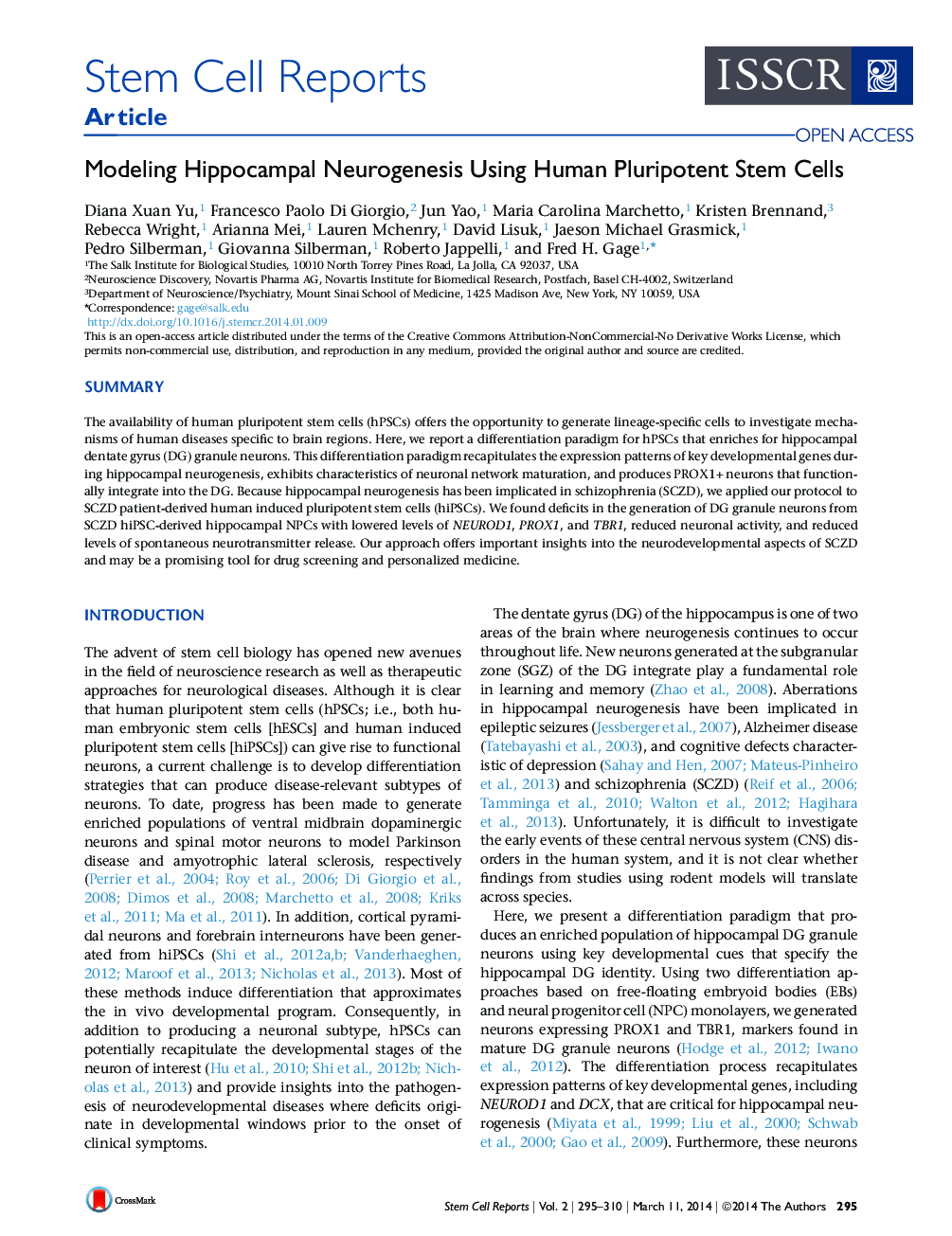| Article ID | Journal | Published Year | Pages | File Type |
|---|---|---|---|---|
| 2093629 | Stem Cell Reports | 2014 | 16 Pages |
•Hippocampal neurogenesis is modeled using human pluripotent stem cells•Differentiated DG neurons are detected using lentiviral PROX1-GFP reporter construct•Differentiated granule neurons functionally integrate into the dentate gyrus in vivo•SCZD hiPSC-derived hippocampal NPCs present deficits in hippocampal neurogenesis
SummaryThe availability of human pluripotent stem cells (hPSCs) offers the opportunity to generate lineage-specific cells to investigate mechanisms of human diseases specific to brain regions. Here, we report a differentiation paradigm for hPSCs that enriches for hippocampal dentate gyrus (DG) granule neurons. This differentiation paradigm recapitulates the expression patterns of key developmental genes during hippocampal neurogenesis, exhibits characteristics of neuronal network maturation, and produces PROX1+ neurons that functionally integrate into the DG. Because hippocampal neurogenesis has been implicated in schizophrenia (SCZD), we applied our protocol to SCZD patient-derived human induced pluripotent stem cells (hiPSCs). We found deficits in the generation of DG granule neurons from SCZD hiPSC-derived hippocampal NPCs with lowered levels of NEUROD1, PROX1, and TBR1, reduced neuronal activity, and reduced levels of spontaneous neurotransmitter release. Our approach offers important insights into the neurodevelopmental aspects of SCZD and may be a promising tool for drug screening and personalized medicine.
